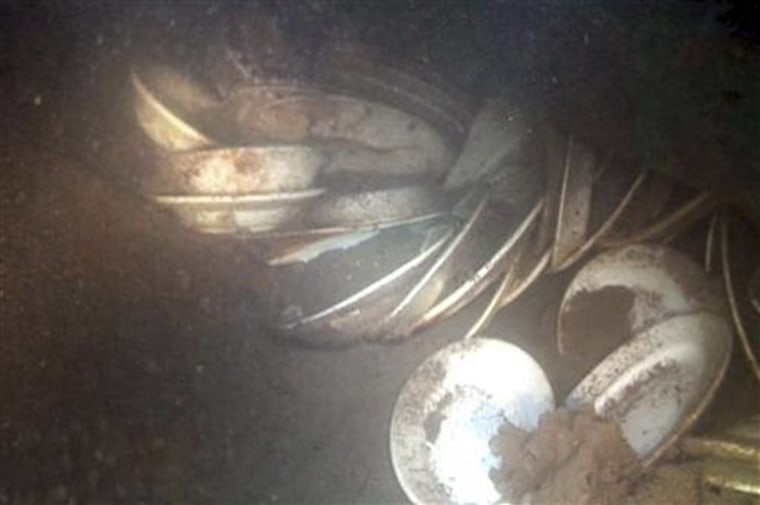Five Massachusetts men became the first divers to reach the wreck of a 19th-century steamship that sank in one of the most destructive storms in New England history, and say they saw an array of artifacts like dishes and mugs but no human remains.
The Portland, known as the "Titanic of New England," sank off the Massachusetts coast Nov. 26, 1898, after it sailed from Boston, taking more than 190 people with it.
The recreational divers spoke this week for the first time about their three successful dives in August and September.
David Faye, one of the divers, said wreckage of the Portland was littered with artifacts like plates, dishes and mugs, wash basins and toilets — and even a few medicine bottles etched with the name of an apothecary in Maine.
"I immediately thought of these people — how horrible it must've been," said Faye, a lawyer in Cambridge, Mass. "They had no communication with shore. They had no idea where they were. The storm was pushing them out to sea."
An image from team leader Bob Foster's camera depicts a starfish clinging to a mug. Another shows toppled stacks of sandy plates and dishes.
The divers found no human remains. If there are any human remains, they were likely below decks, which the divers didn't explore because of the danger, they said.
Reaching the ship tested the divers' limits and their equipment because the wreckage rests so far below the surface. Their dives — 460 feet below ocean surface — were so deep that some of the underwater lights imploded with a boom, Faye said. The divers could only spend 10 to 15 minutes exploring the wreckage site before returning to the surface.
The wreck was first located in 1989 by underwater explorers Arnold Carr and John Fish, but they couldn't prove it was the Portland.
It wasn't until 2002 that the ship's location in the Stellwagen Bank National Marine Sanctuary, an area about the size of Rhode Island between Cape Ann and Cape Cod, was firmly established by a National Oceanic and Atmospheric Administration team using sonar equipment and remotely operated submersibles.
Because the location is kept secret, the divers had to independently verify the location. They had no sponsors; they paid out of pocket for their dives. The diving equipment cost between $10,000 and $50,000 per person, Faye said.
"You have to give the wreck its respect," Faye said. "It's deep and it's dangerous, and you have to be at the top of your game."
The 291-foot Portland left Boston's India Wharf for Portland, Maine, as scheduled despite forecasts of an impending storm and the decision by the captain of a sister ship to stay in port.
Captain Hollis Blanchard may have believed the Portland could outrun the gale, but the storm was actually two separate storms that collided at sea and grew in force. Winds reached 100 mph, and waves crested at 60 feet, higher than the ship's smokestacks.
Bodies and wreckage began to wash up on the shores of Cape Cod shortly after the storm, which became known as The Portland Gale.
The divers were unable to retrieve artifacts from the wreckage because of rules in place at the Stellwagen Bank National Marine Sanctuary. For now, the Portland's resting place remains a secret to prevent it from being plundered.
